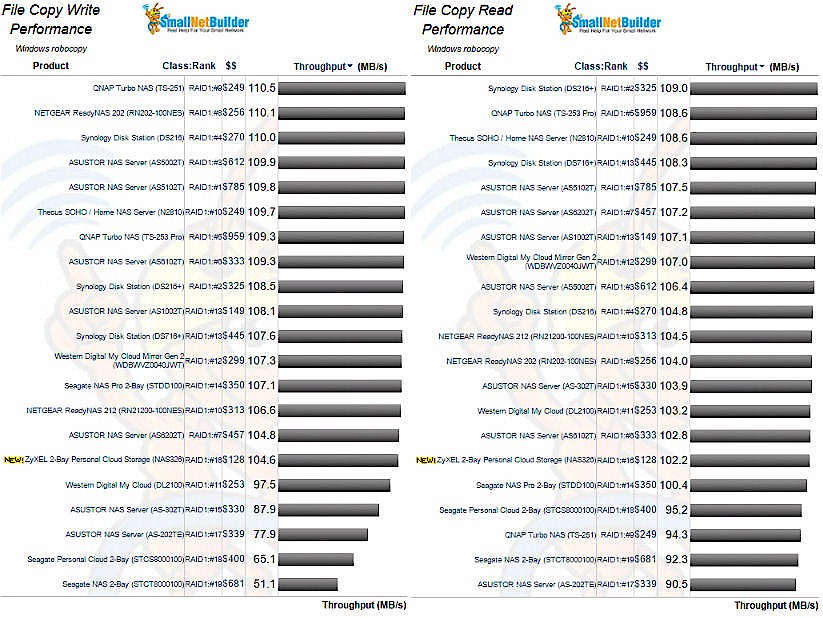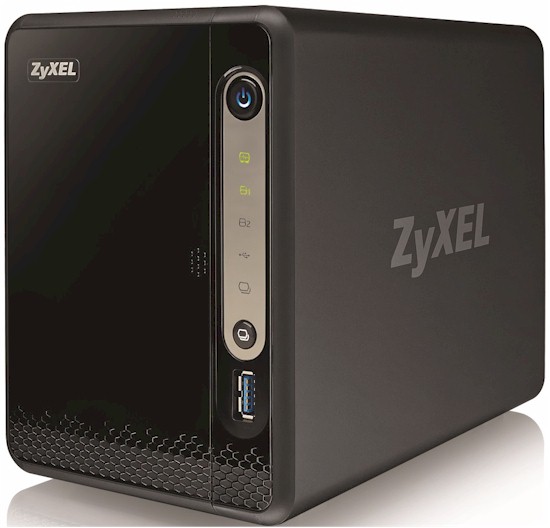
| At a glance | |
|---|---|
| Product | Zyxel 2-Bay Personal Cloud Storage (NAS326) [Website] |
| Summary | Dual-drive Marvell-based NAS with USB 3.0 ports, lots of upload/download options and support for add-in modules. |
| Pros | • Great price / performance • Lots of upload / download options • ZyXEL cloud with built-in DDNS • Very low noise |
| Cons | • Drives not hot swappable • Slow backup • No eSATA port • iSCSI configuration a bit tricky |
Typical Price: $91 Buy From Amazon
Introduction
ZyXEL pulled all its NASes from the market at the end of February for undisclosed reasons, but just recently made them available again. Along with the renewed availability came the NAS326 2-Bay Personal Cloud Storage. The NAS326 is targeted at the entry-level market and it currently holds bragging rights for the least expensive 2-Bay RAID1 class NAS in our current NAS Charts.
If you’re thinking the product image above looks familiar, you’re right. The case on the NAS326 is virtually identical to the NAS325 V2 Tim reviewed in early 2014. The NS325 V2 was an update of the original NAS325 I reviewed in October 2012. With the model number change to NAS326, the NAS has an updated Marvell processor and now features a desktop-style user interface found on most modern NASes along with support for downloadable packages that add to the device’s functionality.
The NAS326 has a 12-page Quick Start Guide that will help you with disk installation and get you connected to the NAS. On page 11, you’ll find support phone numbers along with QR codes for downloading ZyXEL’s mobile apps. There’s also an exhaustive 372-page user manual, common to all of the ZyXEL NASes that details all of the features available. It’s well worth a download and quick browse if you’re considering purchasing this NAS.
The image below shows the callouts for the NAS326 front and rear panel. It was taken from the NAS326 data sheet, which also includes detailed specifications.
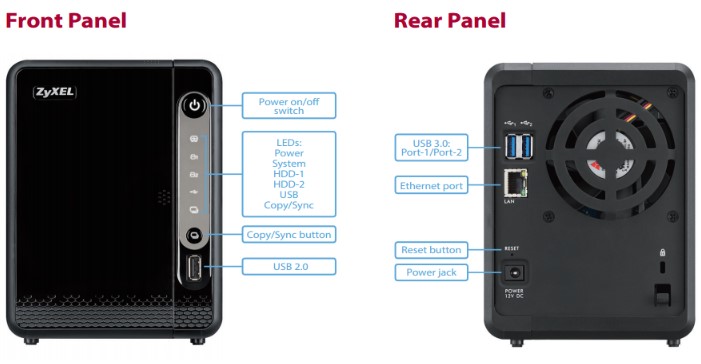
ZyXEL NAS326 callouts
The table below shows the key for LED indicators.
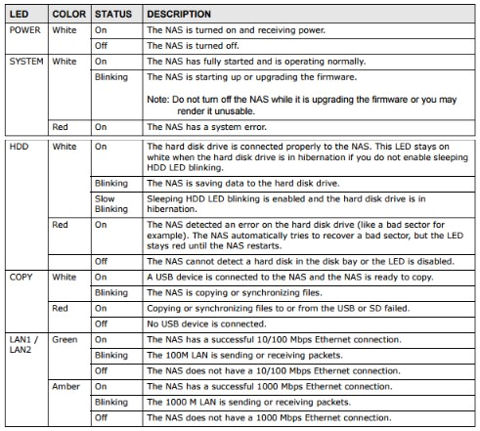
Table 1: ZyXEL NAS326 LED indicators
Inside
The image below shows the main board of the NAS326. The Marvell single-core Armada 38X 88F6810-A0 is near the center of the board. On the right is a card slot for the disk drive backplane. The 512 MB of Samsung DDR3 memory is soldered to the PCB and is not upgradeable. The board has neither heatsinks nor an RF can atop the main components.
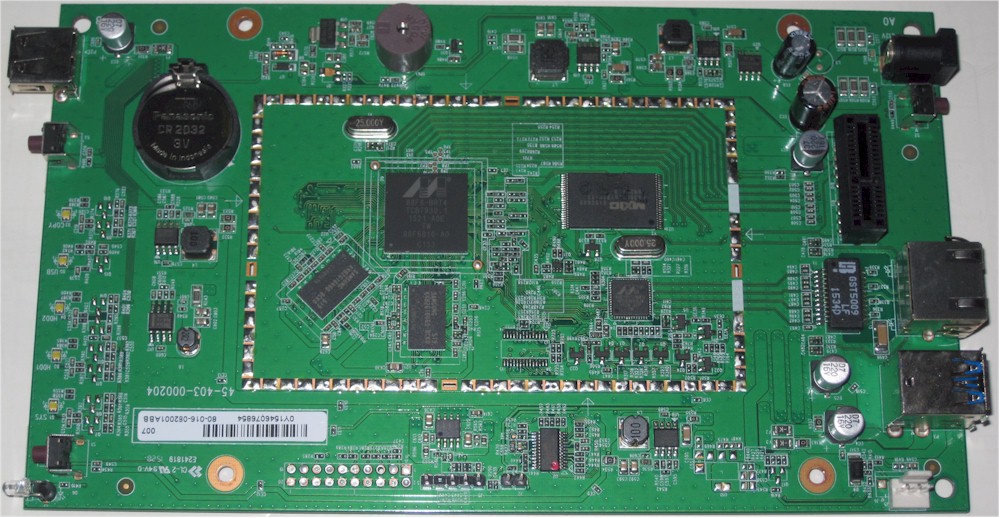
ZyXEL NAS326 main PCB
For this review, I decided to compare the NAS326 with the ASUSTOR AS1002T and Thecus N2810. Of the three products, only the NAS326 has a single core processor. While in the past we’ve reviewed many single core processor-based NASes, most of the more recent entries in the market have dual-core processors.
If you filter the NAS Charts for RAID1, the default current testing methodology and sort by price, you’ll see these three NASes are the least expensive RAID1 class products. I chose Thecus N2810 over the identically-priced QNAP TS-251, as the Thecus NAS was just reviewed in May, while the QNAP review dates back almost two years. The TS-251 is, however, still in the current QNAP product lineup. We’ll see in the performance section of the review whether the single-core processor can keep up with the dual-cores. The image below shows Windows file copy write performance for the five least expensive 2-drive NASes.
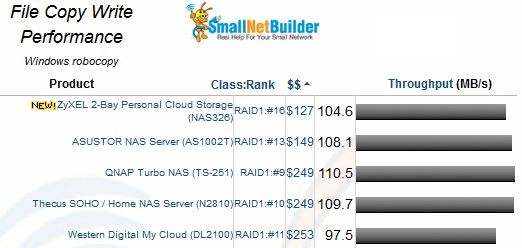
NAS Chart – 2 drive NASes sorted by price and filtered for current testing methods
The table below summarizes the key components for the selected products.
| ZyXEL NAS326 | ASUSTOR AS1002T | Thecus N2810 | |
|---|---|---|---|
| CPU | Marvell Single Core Armada 38X 88F6810-A0 @ 1.33 GHz | Marvell ARMADA-385 @ 1GHz dual-core | Intel Celeron N3050 @ 1.6 GHz dual-core |
| RAM | 512 MB DDR3 Samsung K4B2G1646Q (x2) | 512 MB Samsung K4B4G1646D | 2 GB DDR3 SoDIMM (expandable to 8 GB total, not easily) |
| Flash | 4 GB MTFC4GMCDM-1M WT | 16 MB Macronix MX25L12835 | 4 GB MTFC4GMCDM-1M WT |
| Ethernet | Marvell 88E1512-NNP2 Gigabit Transceiver | Realtek RTL8211E | Intel WGI210AT Gigabit Ethernet controller (x2) |
Table 2: Key component summary
The NAS326 drew 11 W with two WD Red 1 TB (WD10EFRX) drives spun up and 6 W in power save mode. RAID 1 rebuild was immediate when the bad block check was skipped. Noise was rated as very low.
Features
As noted in the introduction, the NAS326 ships with an updated version (5.1) of the ZyXEL NASOS. It features a new desktop-type user interface that is similar to what you’ll find on competing products from Synology, QNAP, ASUSTOR and others. The image below shows the"desktop" landing page.
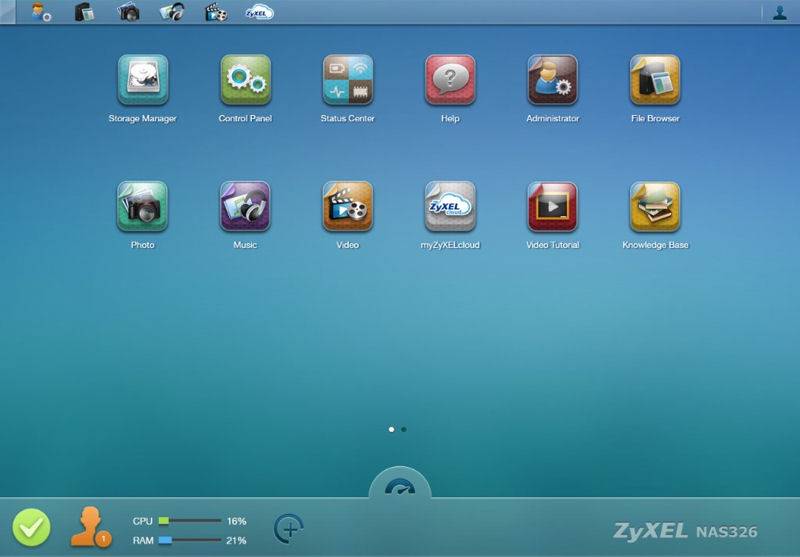
ZyXEL NAS326 desktop
The desktop metaphor doesn’t carry into all the NAS326’s features, however. You’ll need to access the Administrator menu (top left menu bar item) to configure most of them as shown below. This menu will be familiar if you already have a ZyXEL NAS, since variations of it have formed the heart of all its NAS OSes.
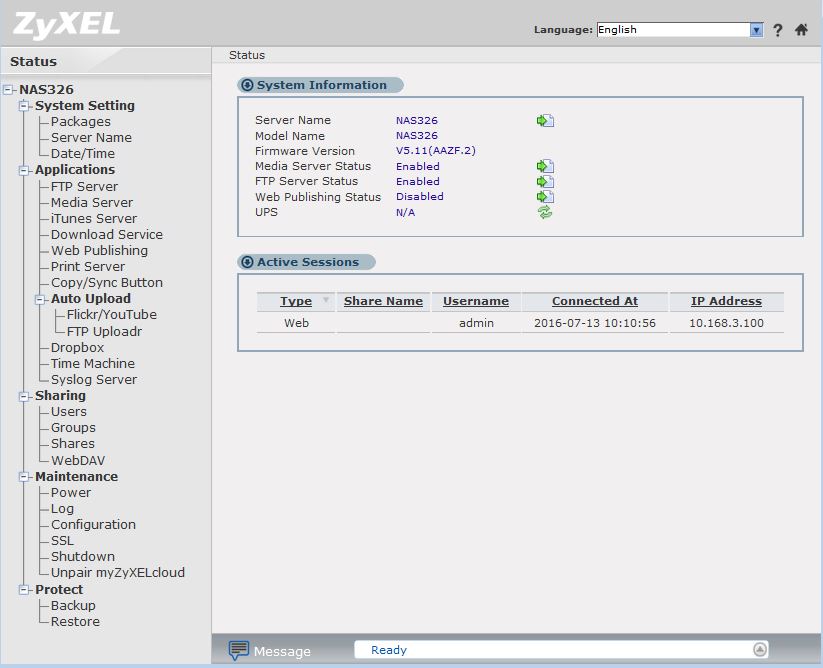
ZyXEL NAS326 Administrator screen
The new OS moves Storage setup into its own window that is launched via the Storage Manager desktop icon. You’ll need to click on the Control Panel desktop icon and then into the TCP/IP submenu to get at key network settings.
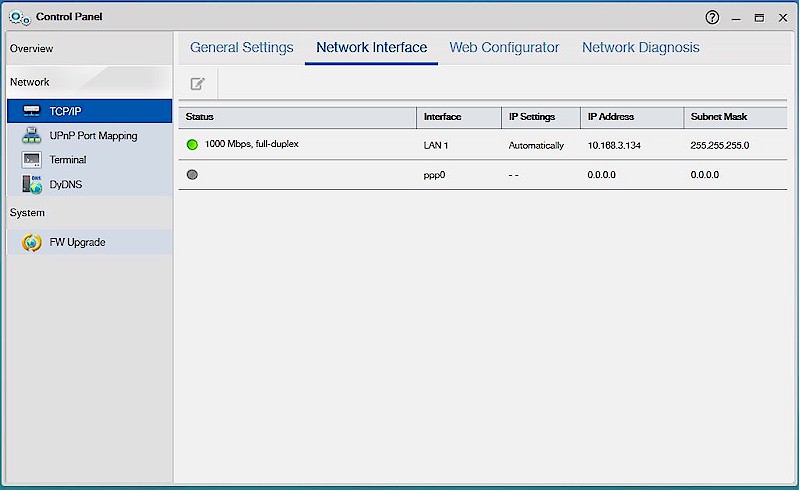
Network interface screen
The NAS326 supports iSCSI targets, but connecting required help from ZyXEL support. CHAP authentication is required when setting up the iSCSI target on the NAS and an allowed initiator must also be specified. Windows’ iSCSI initiator setup requires acessing its Advanced menu after connecting to the ZyXEL target. The settings shown below are examples. You’ll need to enter the correct values for your network and NAS.
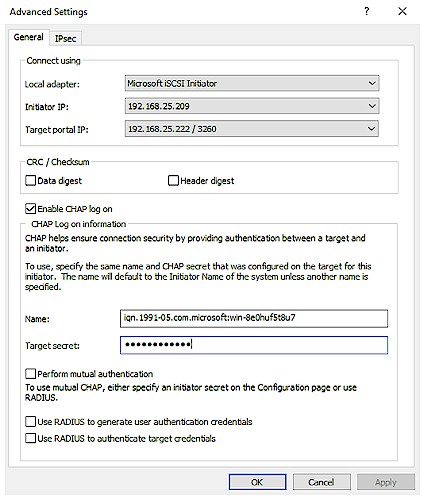
Windows iSCSI initiator configuration
There isn’t a product emulator on the ZyXEL website, so I’ve included a short gallery to give you a feel for other features and the user interface. In all, ZyXEL gets points for trying to improve its admin UI. But you’ll find yourself hunting around for functions among the desktop icon windows, which can’t be resized, and old-school Administrator screen, which lanuches into its own browser tab.
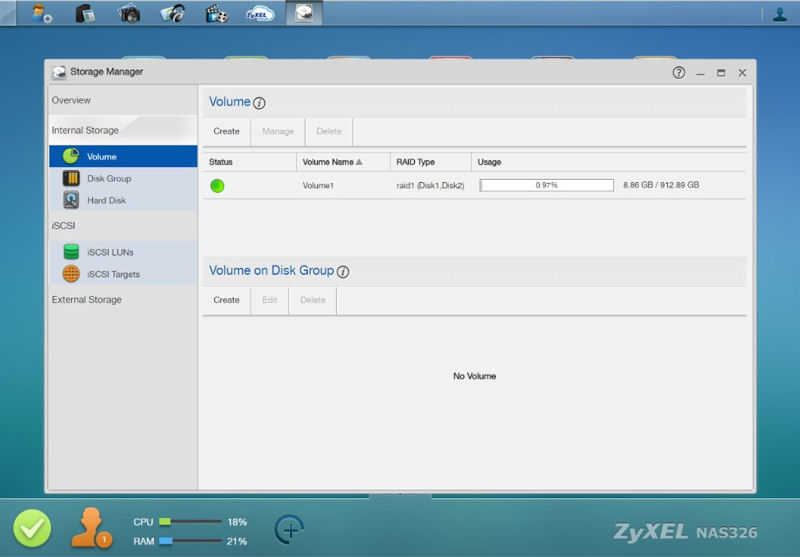
Here you can display and manage disk and volumes
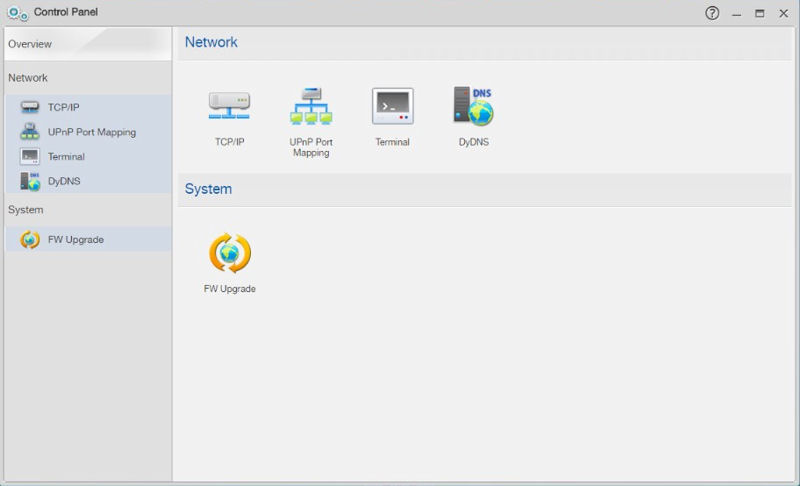
Manage network settings, view UPnP port mapping, access the terminal interface and configure DDNS
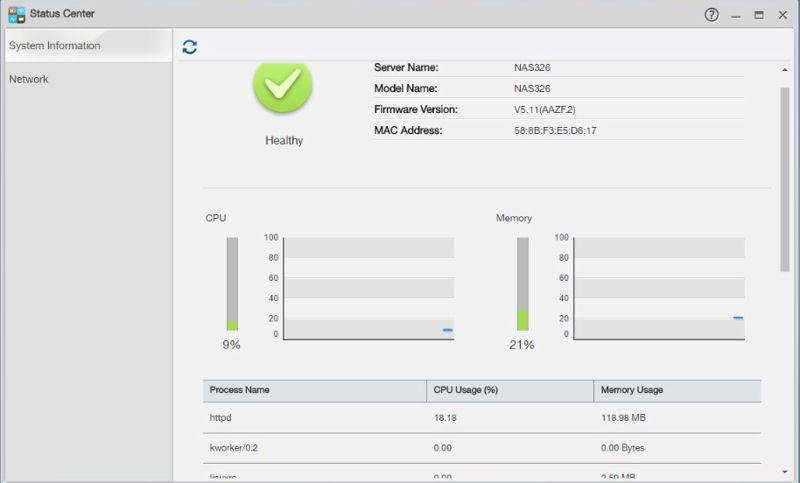
View system information, performance graphs, and breakdown of process stats

This provides full access to the features in a UI that is reminiscent of previous designs
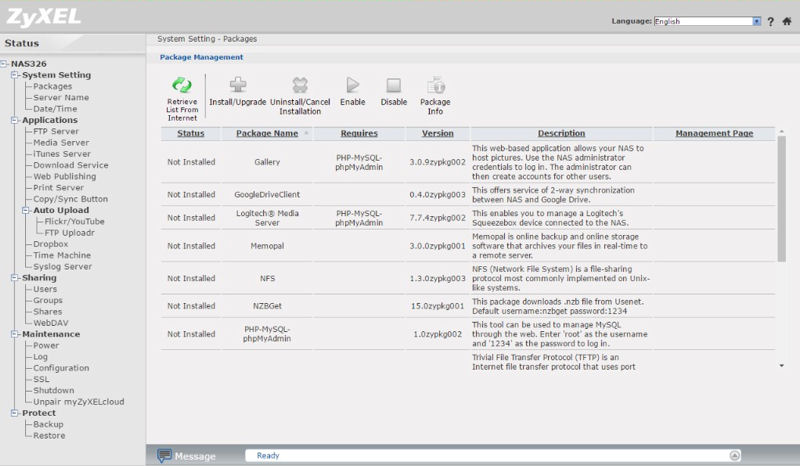
Screen 1 of packages available to install
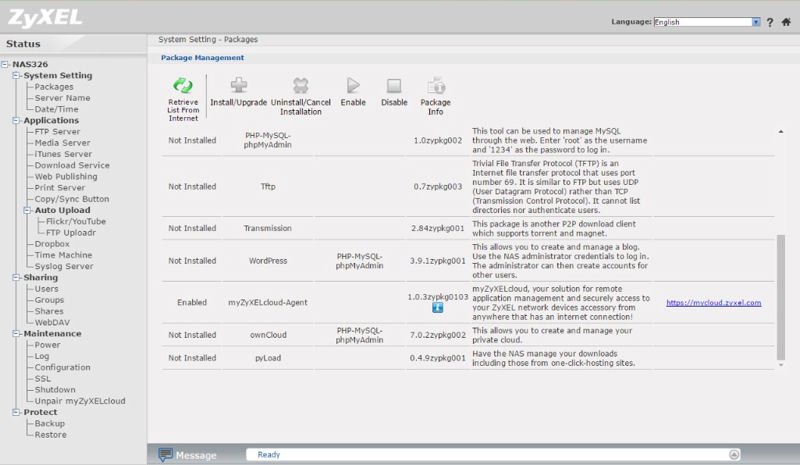
Screen 2 of packages available to install|
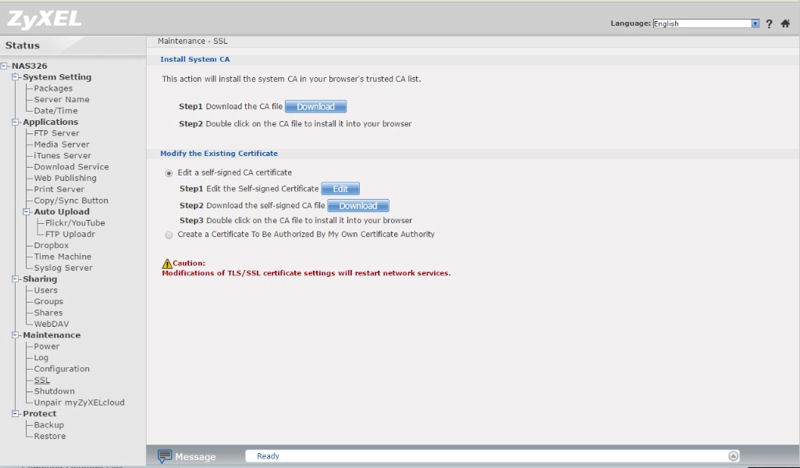
Install and manage SSL certificates
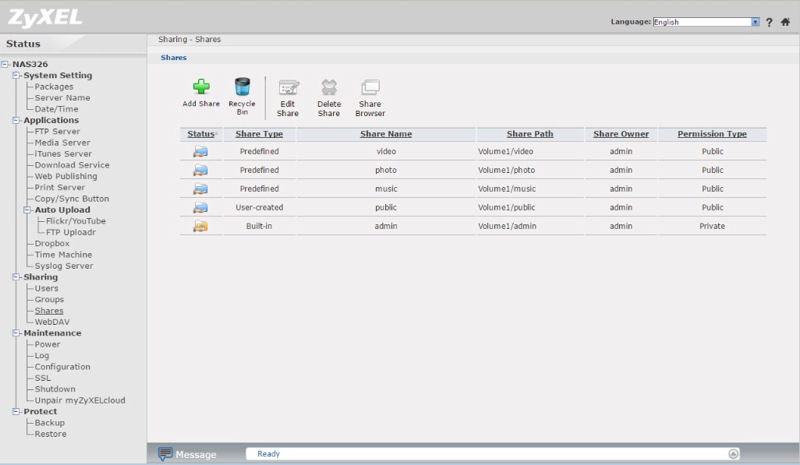
Create, manage and delete shares
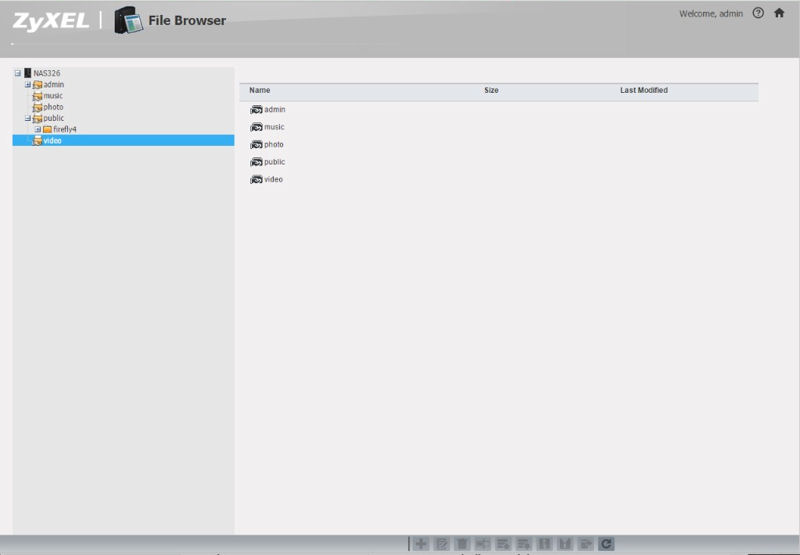
Browse files on the NAS326 in a familar tree display
myZyXELcloud
Section by Tim Higgins
As the product name indicates, ZyXEL has endowed the NAS326 with "personal cloud" features. I was able to register for myZyXELcloud easily enough, entering only my email address and password, and clicking on a confirmation email link.
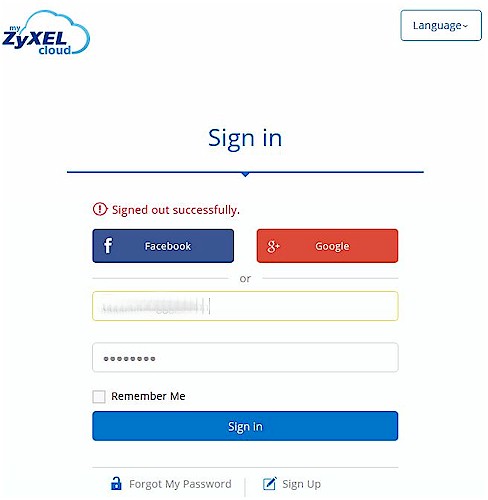
myZyXELcloud registration
I initially couldn’t successfully pair my NAS326, even though it was located just fine. But after updating the NAS to V5.11(AAZF.4) and the myZyXELCloud-Agent to 1.0.4, the pair completed quickly. The screenshot below shows the pre-paired status screen with the old software versions. The upper icon is the pairing icon and it’s animated. The animation led me to believe a scan was in process and that I had to wait. I eventually moused over the button and saw it was ready to be clicked. The button’s function would be clearer if it just read Pair NAS.
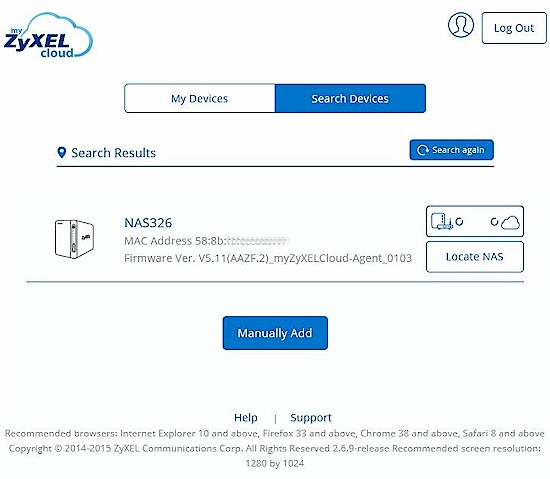
myZyXELcloud pairing
When pairing is done, you click the DDNS Setup and UPnP Setup buttons. DDNS setup prompts to set up a subdomain of zyxel.me (I used snb.zyxel.me)
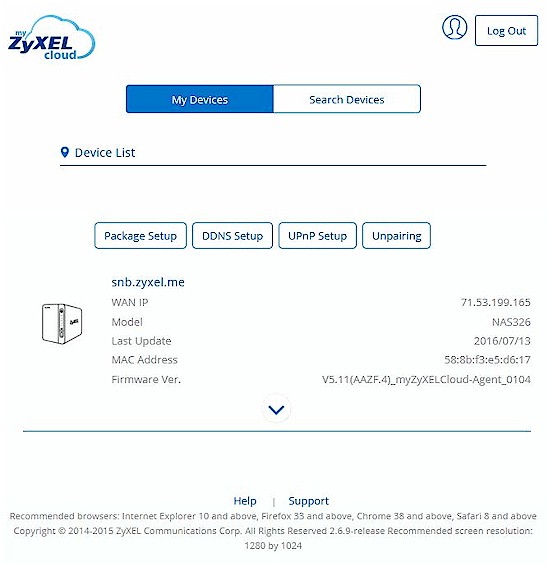
myZyXELcloud successfully paired
I found the UPnP Setup screen initially blank because I’ve disabled UPnP port forwarding on my router. Once I temporarily enabled UPnP, the available services appeared. Each service has a separate enable and they are all defaulted off. Enabling Webpublishing_HTTP here and the service itself in the NAS326 Administrator > Applications > Web Publishing page lets you access files in the published folder remotely. I found, however, that I couldn’t access my myZyXELcloud subdomain while connected to my LAN. I had to connect from the internet to access the folder.
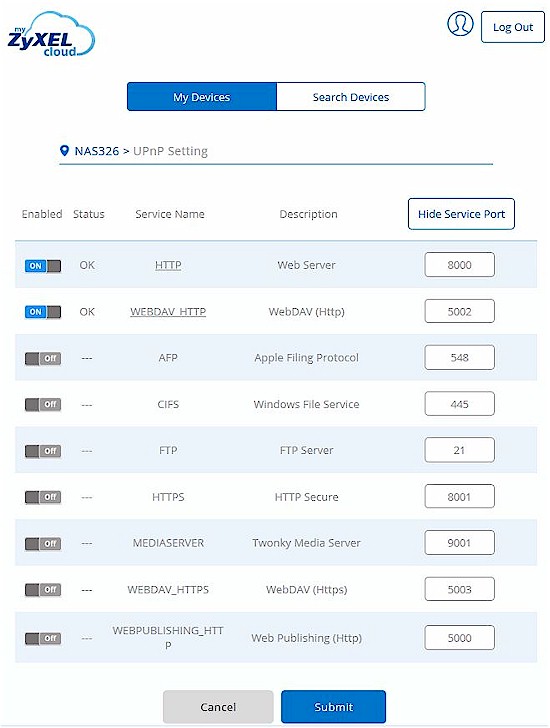
myZyXELcloud successfully paired
I also enabled WebDAV in the UPnP Setting menu and tried the ZyXEL Drive app. Unlike browser-based access, the Drive app connected just fine while connected via Wi-Fi to my LAN.
In all, I’d say myZyXELcloud should provide relatively easy remote access to files on your NAS326, if you’re willing to run the security risk of enabling UPnP on your router and experimenting to find the right combination of myZyXELcloud UPnP and NAS326 applications settings. The otherwise comprehensive User Guide has no mention of myZyXELcloud and the ZyXEL Knowledge Base makes you specify a product in order to search for anything. I was able to unearth a myZyXELcloud User Guide from a Google search, but it wasn’t that helpful, lacking even basic information such as the router ports that need to be opened to access myZyXELcloud services.
Performance
Version 5.11(AAZF.2) firmware was loaded onto the NAS326 and performance tests were run using the Revision 5 NAS test process. All tests were run using two Western Digital Red 1 TB (WD10EFRX) ZyXEL provided. The test volumes were created using Ext4.
The composite image below shows File Copy Write and File Copy Read performance for two drive NASes tested with the Revision 5 test process. For File Copy Write, the NAS326 turned in 104.6 MB/s which places below the middle of the pack. For File Copy Read performance, the NAS326 only 102.2 MB/s, also below the middle.
Note that quite a few NASes in both charts cluster between 109 and 110 MB/s. That’s about the maximum throughput that you can achieve with single client Gigabit Ethernet testing. And, as we have noted in other reviews, performance within 5% of each other is ranked the same. Although the NAS326 falls outside that tolerance percentage, it still breaks the 100 MB/s mark (although just barely for read).
File Copy Write and File Copy Read performance for two drive NASes
For performance comparison, I’m using the ASUSTOR AS1002T and Thecus N2810 mentioned earlier. All three NASes were tested using EXT4 volumes.
The benchmark summaries below show the inpidual test results for each of the three selected products. For all three products, both the RAID 0 and RAID 1 File Copy Write and Read benchmarks were fairly consistent with the exception of the ASUSTOR Raid 1 File copy read which fell below 100 MB/s with a throughput of 94.5 MB/s. NASPT File copy to NAS and File Copy from NAS were similarly consistent for both RAID levels with the exception of File Copy from NAS for the Thecus N2810 which were 88.9MB/s for RAID 0 and 81.7 MB/s for RAID 1. Both the NAS326 and the AS1002T outperformed the N2810 for NASPT HD playback & record and NASPT 4K HD Playback for both RAID levels.
None of these three NASes have eSATA ports, so no eSATA results appear. The NAS326 was to the only one of the three that had both USB 2.0 and USB 3.0 ports, so results were reported for both interfaces. Actually, it really didn’t matter since the backup throughput for both interfaces was in the low teens. Clearly, the Thecus N2810 outperformed both of the other two NASes for all three file systems on the USB 3.0 backup tests. It also outperformed the other two for network backup and iSCSI read and write tests. However, the NAS326 did edge out the AS1002T for USB 3.0 backup by a small margin.
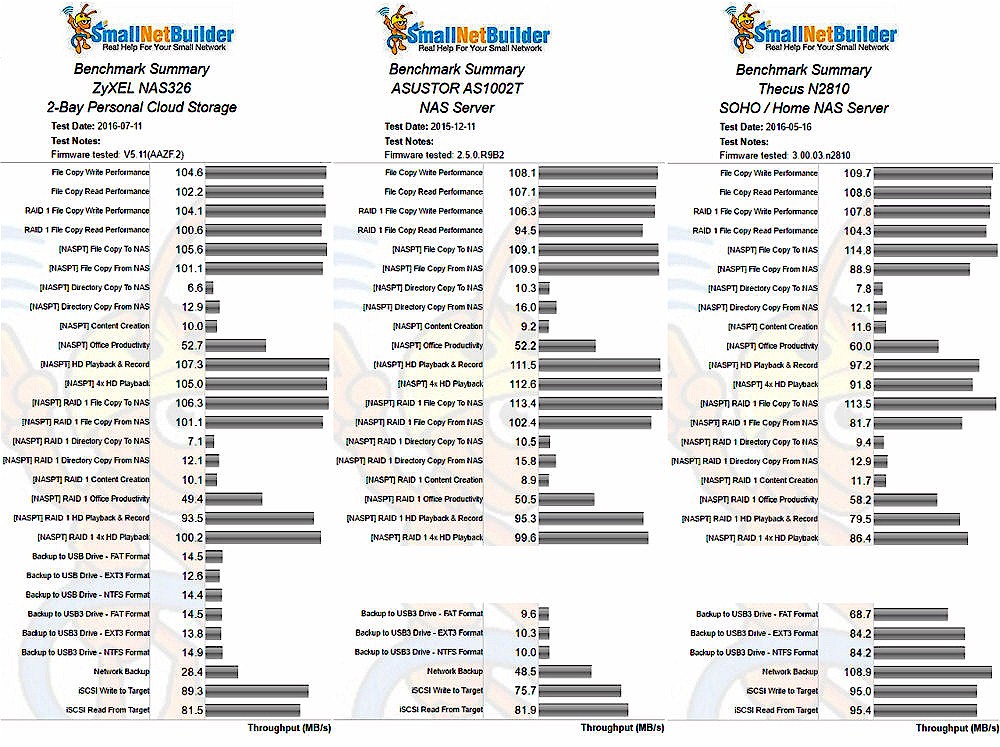
Benchmark summary comparison
The NAS Ranker chart below was filtered for RAID1 and Revision 5 testing and sorted by ascending price. Priced at $128, the ZyXEL is the least expensive of the three NASes compared. It also ranks #16 (lower) than either of the other two compared NASes. However, you can’t always correlate price with performance. The #15 ranked NAS is the ASUSTOR AS-302T selling for $330. The #17 ranked NAS is the ASUSTOR AS-202TE that sells for $339. Both are priced more than twice the price of the NAS326.
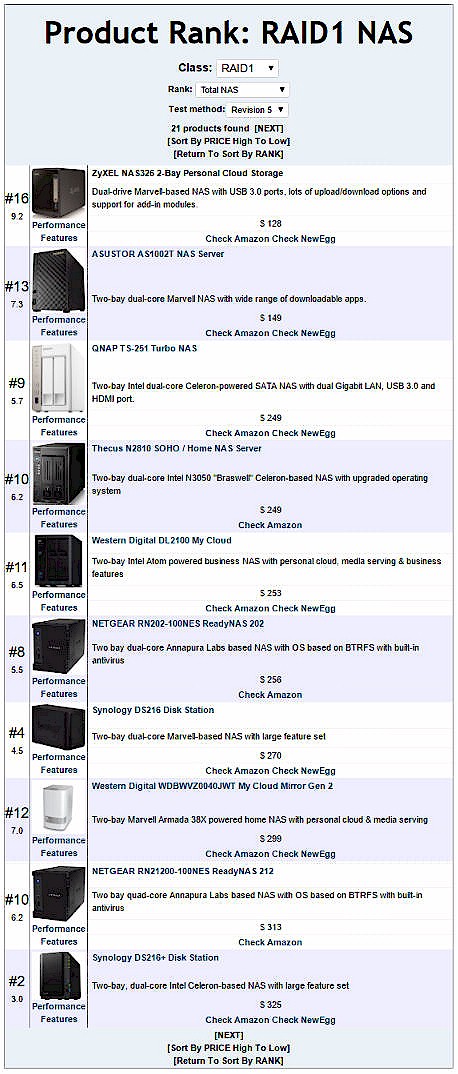
RAID 1 NAS Rank – Sorted by price
The chart below shows the individual and category scores for the three NASes. Not surprisingly, the NAS326 didn’t have any category wins. However, it is surprising that the ASUSTOR had better category scores for Write benchmarks, Read benchmarks, and Video than the Thecus N2810. In fact, the NAS326 had a better Video category rank (#4) than the N2810 (#6). Backup category rankings for both the NAS326 and the AS1002T were low, as expected.
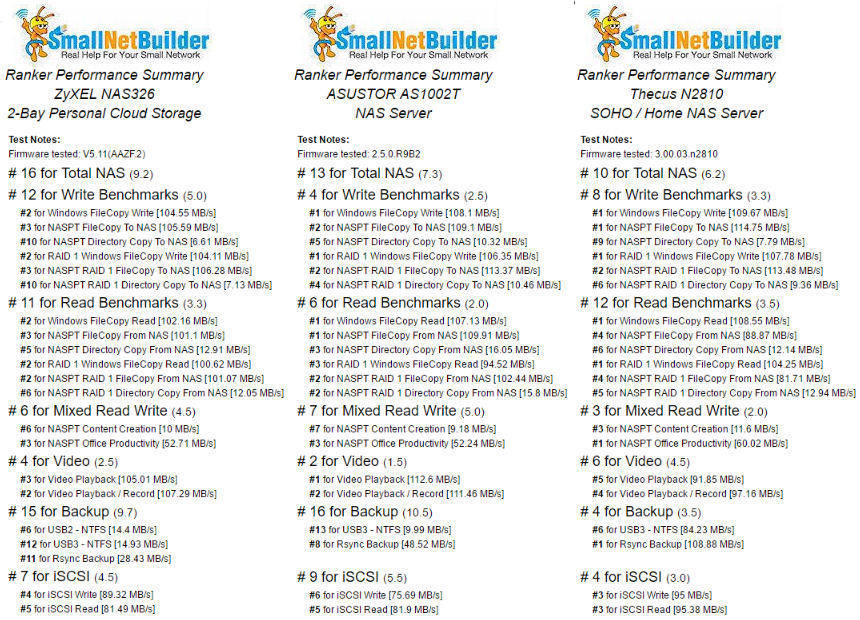
Ranker Performance Summary comparison
Closing Thoughts
The ZyXEL NAS326, priced at $128, is the least expensive BYOD 2-bay NAS we’ve seen. Yet, it has surprisingly decent performance. Its low write and read category scores were, in both cases, brought down by NASPT Directory copy operations. Other write and read category performance results were all in excess of 100 MB/s. With a single Gigabit connection, it’s unlikely that you’d see or feel much of a performance difference for most day-to-day operations.
The NAS326’s new user interface is a step towards keeping it competitive with the “big boys" such as Synology and QNAP. Version 5.1 provides the NAS326 with a desktop interface, downloadable packages as well as assorted cloud features. For the least expensive entry level 2-bay NAS, the NAS326 offers a lot of bang for the buck. You’d have to spend more than double to move up in the charts to a higher performing, more fully-featured NAS.

